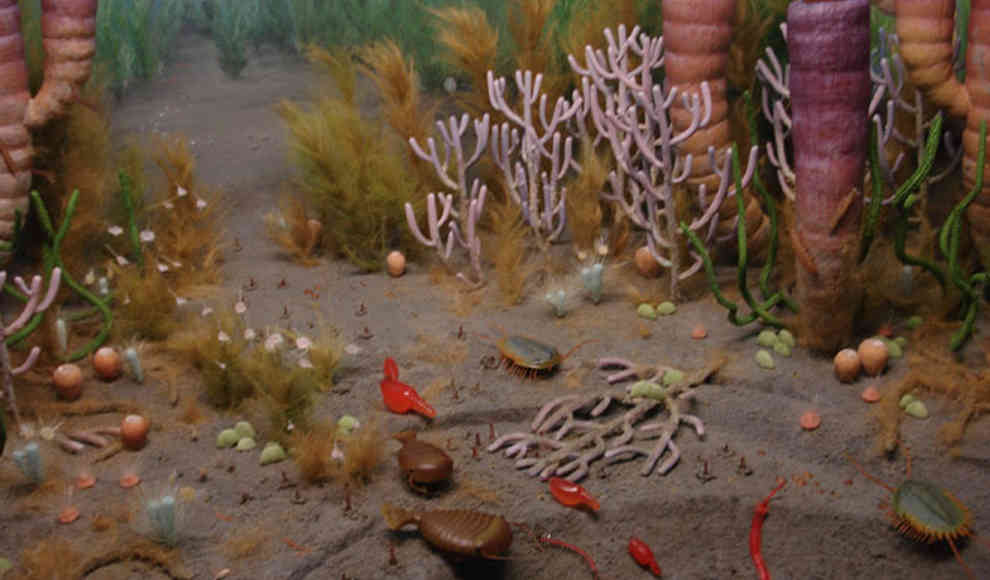A new study by researchers at the University of Florida suggests that the Cambrian explosion, which occurred around 550 million years ago, may be linked to multiple reversals of the Earth’s magnetic field. This resulted in a thinning of the protective ozone layer and an increase in UV radiation, which caused a substantial change in the evolutionary development of life. The Ediacaran period, which occurred around 600 million years ago, was vastly different from the life we know today. The ocean floors were covered in thick bacterial mats and mostly inhabited by mollusks. There were no hard-shelled creatures or meat-eating predators as we know them today.
Around 550 million years ago, a massive extinction event occurred, and most soft-bodied animals died out. In a period of only 5 to 10 million years, known as the Cambrian explosion, a newly structured fauna developed. The cause of this evolutionary transformation is still unclear. Some hypotheses suggest that a rapid increase in oxygen levels in the atmosphere was the reason. Other studies point to the development of predatory, meat-eating species as the cause. A team of researchers led by Joseph Meert from the University of Florida in Gainesville has now proposed a new hypothesis. An unusually rapid sequence of reversals of the Earth’s magnetic field is believed to have triggered the biodiversity upheaval.
During the Ediacaran period, pole reversals occurred much more frequently than usual, as suggested by studies of sedimentary rocks around 550 million years old in western Russia. The temporary weakening of the geomagnetic field allowed high-energy particles from space to penetrate the upper atmospheric layers, causing partial destruction of the ozone layer. In some regions, the ozone layer was weakened by up to 40%, and at least twice as much UV radiation from the sun reached the Earth’s surface, according to the scientific hypothesis. The combination of lower ozone concentration and increased UV radiation favored the development of organisms that could protect their DNA from damage by UV radiation either by burrowing or having a very resistant body structure. This would be a plausible explanation for the evolutionary changes at the transition between the late Ediacaran and early Cambrian periods. However, some scientists remain skeptical, believing that increased UV radiation occurs during periods of unstable Earth’s magnetic field but cannot be held responsible for such a substantial impact on the evolution of species.










